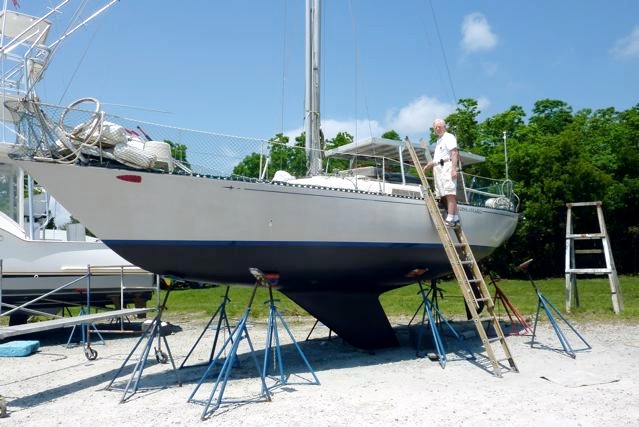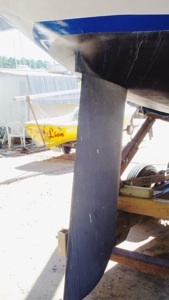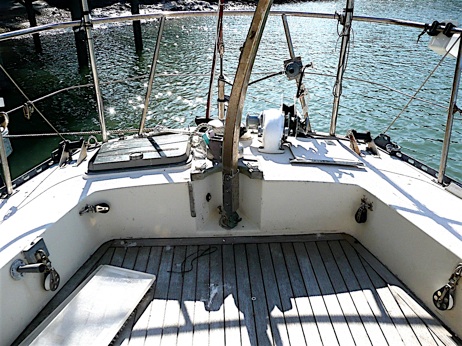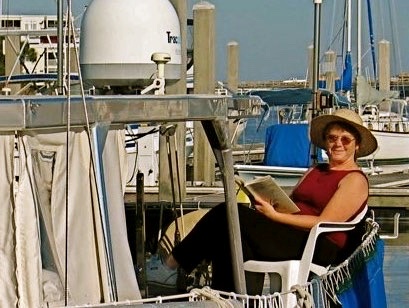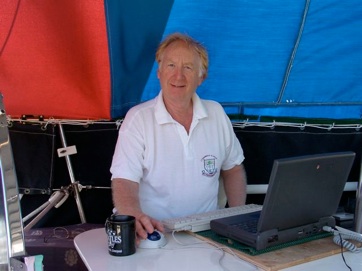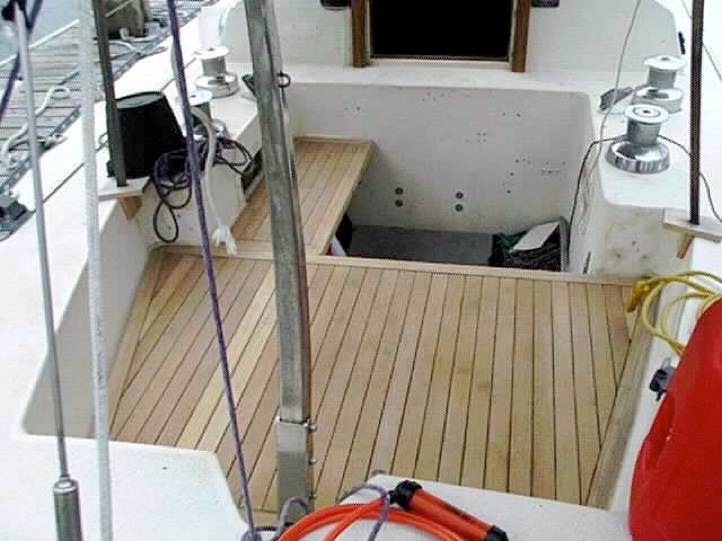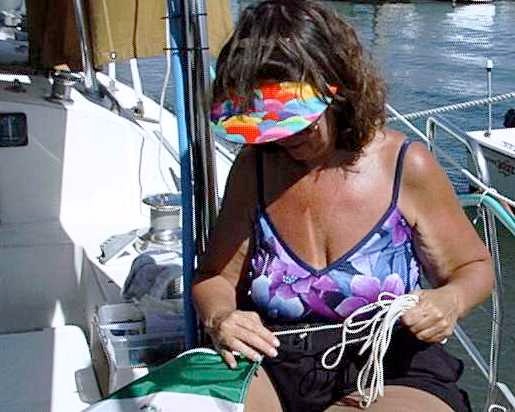Watching your boat in construction is wonderful, and I was lucky that the yard was only a short drive from home, so I could be there every day.
I was busy touring the NorthEast US looking at other boats. I met with Dick Carter to look at his latest 3/4Ton. But eventually I decided to take a chance with the new C&C 3/4Ton which did so well in the 3/4Ton Worlds in Norway.
When I returned to Bruckmann’s yard to sign a deal for boat with the sales office, I discovered that the final hull #15 had been laid and gelcoat color was the gray that I had discussed with the sales office a month or so before. They had guessed I would buy the boat, and made it my color.
Gray was an unusual color for a C&C, but it was a good choice because 42 years later it still looks good and polishes up nicely. As soon as the deal was done, I wandered over to the yard and watched the layup of the balsa coring.
The Balsa coring
The core was in sheets of little squares of end grain balsa held together by a mesh cloth. It was laid in and then polyester resin rolled into it by hand.
Here the core is visible before painting of the quarter berth. The entire hull was cored from the keel up to the deck. The interior hull of woven roving was laid in by hand and rolled into place. This gave a hull section of about 3/4 inch. Finally the interior surface was painted so the surface was nice and smooth. One of the benefits is that I can screw things to the inside of the hull, like cable mounts without compromising the water tightness as the outer hull is not penetrated. Another is that there are no tell tale marks on the outer hull to show where the bulkheads are glassed to the inner hull which on a normal solid glass boat would make a hard spot visible on the exterior gel coat.
This method of construction produces a light and very stiff hull which doesn’t flex in a seaway. The noise level in a sea way is very low inside the salon. I noticed some noise and a little flexing in the very bow section forward of the head during the hurricane waves which were coming from two directions and crashing together. There was no leak.
Hull deck connection
The deck is fastened to the hull with bolts every 4 inches or so.
Every bolt can be accessed from inside in order to tighten the hull deck joint if needed, but I never had to do it. Unlike production boats that fasten bulkheads to the overhead with bolts, all bulkheads are glasses into the deck, which again is of cored construction except it is solid ply in the way of deck fixtures like winches and cleats. When built I had 13 winches installed. I have now reduced it to 7 working winches—4 halyard winches, one sheet winch and two spinnaker winches. As you will read later on, I have removed main, boom and all its hardware, because the sail design allows the boat to perform well without a main. This is an unusual design and is only on the custom 3/4 tons and the first version of the production 33. After that they moved the mast forward to increase the interior salon space, made a smaller headsail and a bigger main. This made the main essential to balance the sail plan.
The rudder and tiller
An unusual feature is that the rudder can spin through 360 degrees, and the tiller can be reversed to enable me to steer the boat in reverse.
This was a very clever idea, not only for maneuvering in the marina, but it allows the rudder to pivot to suit the current, so that if I am tied to a dock in a river, the rudder just faces whichever way the current is running so there is no strain on the rudder. The rudder stock of heavy ss pipe, rides in a fiberglass tube that runs from water level to the deck, so there is no slop even after 40+ years. The tiller is set vertical to allow it to rotate 360 degrees also.
And if I ever hit a log when under power or sail the rudder could spin out of its path and not be damaged.
Notice the flush decks with no coaming which gives places to sit aft, or on the side decks in sun or shade. In the ocean we sat on the aft hatch in a West marine folding seat and this was perfect.
Talking about the tiller: it is stainless steel, and has weld-ments for the autopilot and wind vane connections. With the tiller vertical there is lots of room in the cockpit which can sit eight people.
Seating in the cockpit
In the old days I could sleep in the cockpit because it was teak covered and six feet long, but I have removed the teak because the underlying ply rotted (this was my addition, and not good enough.) This gave me space to put in an engine hatch so I could swap out the engine later. It was 35 years old when I changed it.
Plenty of side deck space for a chair for sitting in the sun. That’s one of the benefits of having no cockpit coamings.
And no cockpit lockers which would be hazardous at sea.
Here is my ‘office’ in Grenada. The tiller is up to clear the cockpit. The table is removable and stows in the cockpit on its edge. This old powerbook still runs.
There are no openings between the cockpit and the interior. If the cockpit filled it wouldn’t spill down below. This is the old layout. The winches have been removed to make more seating area.
And here some friends having afternoon tea. There is space fwd of this view for two more people, and seating aft for another two. Everyone has lots of space. There is space outside on the deck, leaning back against the lifelines as you see here.




